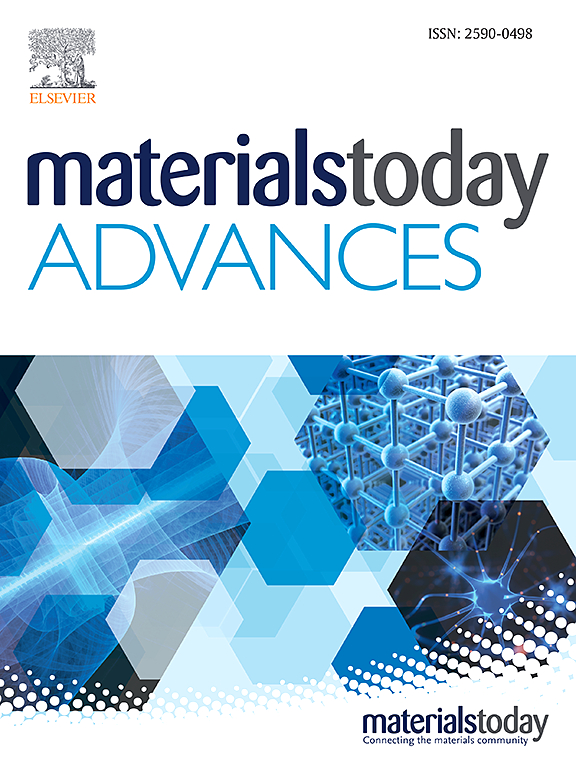Not only a matter of disorder in I-WP minimal surface-based photonic networks: Diffusive structural color in Sternotomis amabilis longhorn beetles
IF 8
2区 材料科学
Q1 MATERIALS SCIENCE, MULTIDISCIPLINARY
引用次数: 0
Abstract
The diverse colors of longhorn beetles arise from either pigmentary absorption or interference of light with various photonic nanostructures. Variations in structure, order, and/or material composition give rise to diverse optical signals. Here, we investigated the colors of the longhorn beetle (Cerambycidae: Lamiinae). By combining optical microscopy and detailed bulk ultrastructural analysis of the colored scales that are the basis of the multicolored patterns of bluish-green and orange markings, we document polycrystalline networks based on the triply periodic minimal surface, Schoen’s I-WP, in the bluish-green scales. In contrast, amorphous quasi-ordered networks are found in the orange scales. The optical signal from the photonic networks is further altered by absorbing pigments. Ridged, micrometer-sized protrusions diffuse reflected light and suppress iridescence in all scale types. We discuss the pivotal role that order and disorder play in these photonic structures and support our understanding of the function of the scale geometry with full-wave optical simulations. Detailed knowledge about visible light interactions within intricate mediums, such as those observed in beetle scales, is highly relevant to current challenges in the design and synthesis of photonic nanostructures operating in the visible regime.基于I-WP最小表面的光子网络中不仅存在无序问题:Sternotomis amabilis 长角甲虫的扩散结构色彩
长角甲虫的各种颜色源于各种光子纳米结构对光的色素吸收或干涉。结构、顺序和/或材料成分的变化会产生不同的光学信号。在这里,我们研究了长角甲虫(Cerambycidae: Lamiinae)的颜色。通过结合光学显微镜和对彩色鳞片(蓝绿色和橙色斑纹的多色图案的基础)的详细块状超微结构分析,我们记录了蓝绿色鳞片中基于三周期最小表面 Schoen's I-WP 的多晶网络。相比之下,在橙色刻度中发现的是无定形的准有序网络。来自光子网络的光信号会因吸收色素而进一步改变。在所有鳞片类型中,微米大小的棱形突起都能漫射反射光并抑制虹彩。我们讨论了有序和无序在这些光子结构中发挥的关键作用,并通过全波光学模拟支持我们对尺度几何功能的理解。详细了解可见光在复杂介质中的相互作用(例如在甲虫鳞片中观察到的相互作用)与当前在可见光环境下设计和合成光子纳米结构所面临的挑战密切相关。
本文章由计算机程序翻译,如有差异,请以英文原文为准。
求助全文
约1分钟内获得全文
求助全文
来源期刊

Materials Today Advances
MATERIALS SCIENCE, MULTIDISCIPLINARY-
CiteScore
14.30
自引率
2.00%
发文量
116
审稿时长
32 days
期刊介绍:
Materials Today Advances is a multi-disciplinary, open access journal that aims to connect different communities within materials science. It covers all aspects of materials science and related disciplines, including fundamental and applied research. The focus is on studies with broad impact that can cross traditional subject boundaries. The journal welcomes the submissions of articles at the forefront of materials science, advancing the field. It is part of the Materials Today family and offers authors rigorous peer review, rapid decisions, and high visibility.
 求助内容:
求助内容: 应助结果提醒方式:
应助结果提醒方式:


